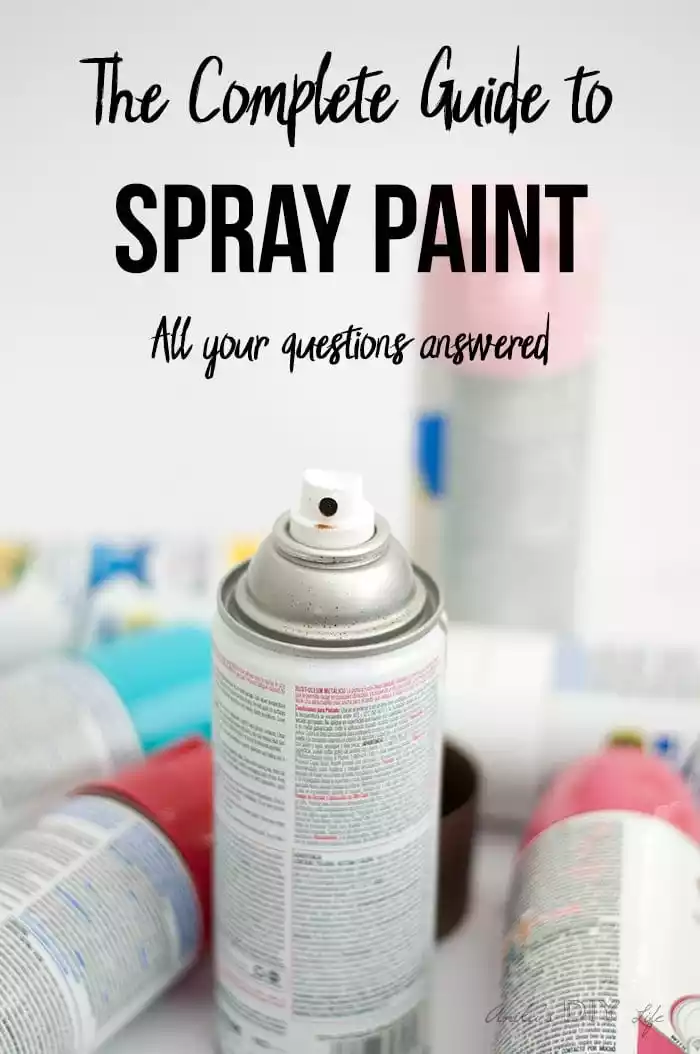The Appeal of Spray Cans in DIY Projects
Spray cans have revolutionized the way we approach home improvement projects. Their convenience, ease of use, and ability to deliver a smooth, even coat make them a favorite among DIY enthusiasts. Whether you’re looking to refresh old furniture, add a pop of color to your walls, or create intricate designs, spray cans offer a versatile solution. The history of spray cans dates back to the 1940s when Edward Seymour invented the first aerosol paint can. Since then, they have become an indispensable tool in the DIY community.
Spray cans are not just about convenience; they also offer a level of precision that traditional brushes and rollers can’t match. The fine mist of paint allows for detailed work, making it ideal for projects that require a delicate touch. Moreover, the quick-drying nature of spray paint means you can complete your projects faster, without the long waiting times associated with other painting methods.
Understanding Spray Cans
How Spray Cans Work
Spray cans operate on a simple yet effective principle. Inside the can, paint is mixed with a propellant, usually a type of compressed gas. When you press the nozzle, the propellant forces the paint out in a fine mist. This mist ensures an even application, reducing the risk of brush strokes or roller marks. The technology behind spray cans has evolved over the years, with modern cans offering adjustable nozzles for different spray patterns and pressures.
Types of Spray Cans
Spray cans come in various types, each designed for specific applications:
• General-purpose spray paint: Suitable for a wide range of surfaces, including wood, metal, and plastic.
• Specialty spray paint: Designed for specific materials like glass, fabric, or ceramics.
• Primer spray paint: Used as a base coat to improve the adhesion and durability of the topcoat.
• Clear coat spray paint: Provides a protective layer over the paint, enhancing its durability and finish.
Preparation Before Using Spray Cans

Choosing the Right Spray Can for Your Project
Selecting the appropriate spray can is crucial for achieving the desired results. Consider the following factors:
• Surface material: Ensure the spray paint is compatible with the material you’re working on.
• Finish: Decide whether you want a matte, glossy, or satin finish.
• Color: Choose a color that complements your project’s overall aesthetic.
Safety Precautions
Safety should always be a priority when using spray cans. Here are some essential precautions:
• Work in a well-ventilated area: Spray paint fumes can be harmful, so ensure proper ventilation.
• Wear protective gear: Use gloves, goggles, and a mask to protect yourself from paint and fumes.
• Keep away from open flames: Spray cans are flammable, so avoid using them near heat sources.
Techniques for Effective Spray Painting
Proper Spray Painting Techniques
Mastering the right technique can make a significant difference in the outcome of your project. Follow these tips for a smooth finish:
• Shake the can well: Ensure the paint is thoroughly mixed before use.
• Test spray: Before applying to your project, test the spray on a piece of cardboard to check the spray pattern and pressure.
• Maintain a consistent distance: Hold the can about 12 inches from the surface and move it in a steady, sweeping motion.
• Overlap strokes: Slightly overlap each stroke to ensure even coverage.
Common Mistakes to Avoid
Avoid these common pitfalls to achieve a professional-looking finish:
• Spraying too close: This can cause drips and uneven coverage.
• Applying too much paint at once: Multiple thin coats are better than one thick coat.
• Ignoring drying times: Allow each coat to dry completely before applying the next.
Surface Preparation

Cleaning and Sanding the Surface
Proper surface preparation is key to a successful paint job. Follow these steps:
• Clean the surface: Remove dirt, grease, and dust using a mild detergent and water. Rinse thoroughly and let it dry.
• Sand the surface: Lightly sand the surface to create a smooth, even base. Use fine-grit sandpaper for best results.
Priming the Surface
Priming is essential for improving paint adhesion and durability. Here’s how to do it:
• Choose the right primer: Select a primer that is compatible with both the surface and the spray paint.
• Apply the primer: Use the same technique as spray painting, applying thin, even coats. Allow the primer to dry completely before proceeding.
Application Tips
Applying the First Coat
The first coat sets the foundation for your paint job. Follow these tips for a flawless application:
• Start with a light coat: Apply a thin, even coat to avoid drips and runs.
• Use smooth, sweeping motions: Maintain a consistent distance and overlap each stroke slightly.
• Allow adequate drying time: Let the first coat dry completely before applying additional coats.
Layering and Finishing
Building up layers gradually ensures a durable and even finish. Here’s how to do it:
• Apply multiple thin coats: Each coat should be light and even, allowing for proper drying between layers.
• Sand between coats: Lightly sand the surface with fine-grit sandpaper between coats to ensure a smooth finish.
• Finish with a clear coat: For added protection and a polished look, apply a clear coat after the final layer of paint.
Special Effects and Finishes
Creating Textured Finishes
Textured finishes can add depth and interest to your projects. Here’s how to achieve them:
• Use specialty spray paints: Look for spray paints designed for textured finishes, such as stone or hammered metal.
• Apply in multiple directions: Vary the direction of your strokes to create a more natural, textured look.
• Experiment with techniques: Try different techniques, such as sponging or stippling, to achieve unique textures.
Using Stencils and Patterns
Stencils and patterns can add intricate designs to your projects. Follow these steps:
• Choose the right stencil: Select a stencil that complements your project’s design.
• Secure the stencil: Use painter’s tape to hold the stencil in place.
• Apply the paint: Spray lightly over the stencil, using multiple thin coats to avoid bleeding.
• Remove the stencil carefully: Allow the paint to dry slightly before removing the stencil to avoid smudging.
Maintenance and Storage
Storing Spray Cans Properly
Proper storage extends the life of your spray cans and ensures they remain effective. Follow these tips:
• Store in a cool, dry place: Keep spray cans away from heat sources and direct sunlight.
• Keep the nozzle clean: Wipe the nozzle after each use to prevent clogging.
• Store upright: Store cans upright to prevent leaks and ensure the paint remains mixed.
Maintaining Spray Can Nozzles
Clogged nozzles can be frustrating, but regular maintenance can prevent this issue. Here’s how:
• Clean the nozzle after each use: Wipe the nozzle with a cloth or paper towel to remove any paint residue.
• Soak in solvent: If the nozzle becomes clogged, soak it in a solvent like acetone to dissolve the blockage.
• Use a nozzle cleaner: Specialized nozzle cleaners can help keep your spray can nozzles in top condition.
Environmental Considerations
Eco-Friendly Spray Paint Options
Choosing eco-friendly spray paints can reduce your environmental impact. Look for these features:
• Low VOCs: Volatile organic compounds (VOCs) contribute to air pollution, so opt for low-VOC spray paints.
• Water-based formulas: Water-based spray paints are less harmful to the environment and easier to clean up.
• Recyclable cans: Some brands offer spray cans made from recyclable materials.
Disposing of Spray Cans Responsibly
Proper disposal of spray cans is essential for environmental safety. Follow these guidelines:
• Empty the can completely: Ensure the can is empty before disposal.
• Check local regulations: Disposal regulations vary, so check with your local waste management authority.
• Recycle if possible: Many spray cans are recyclable, so look for recycling options in your area.
Troubleshooting Common Issues
Dealing with Clogged Nozzles
Clogged nozzles can disrupt your project, but they can be fixed with these steps:
• Remove the nozzle: Take off the nozzle and soak it in a solvent like acetone.
• Use a pin: Gently insert a pin into the nozzle to clear any blockages.
• Test spray: After cleaning, test the spray on a piece of cardboard to ensure it’s working properly.
Fixing Uneven Coats
Uneven coats can ruin the appearance of your project. Here’s how to fix them:
• Sand the surface: Lightly sand the uneven areas with fine-grit sandpaper.
• Apply a thin coat: Apply a thin, even coat of paint to the sanded areas.
• Blend the edges: Feather the edges of the new coat to blend it seamlessly with the surrounding paint.
Advanced Techniques
Blending Colors
Blending colors can create stunning visual effects. Follow these steps:
• Choose complementary colors: Select colors that blend well together.
• Spray in layers: Apply the first color, then gradually blend in the second color while the paint is still wet.
• Use a soft brush: Gently blend the colors with a soft brush for a smooth transition.
Creating Ombre Effects
Ombre effects add a gradient of color to your projects. Here’s how to achieve them:
• Select your colors: Choose a base color and one or more gradient colors.
• Spray the base color: Apply the base color to the entire surface.
• Blend the gradient: Gradually blend the gradient colors, starting from the bottom and working your way up.
• Feather the edges: Use a soft brush to feather the edges for a seamless transition.
Cost-Effective Tips
Maximizing Spray Can Usage
Get the most out of your spray cans with these tips:
• Shake well: Ensure the paint is thoroughly mixed to avoid wasting paint.
• Spray in short bursts: Short bursts of spray reduce overspray and waste.
• Store properly: Proper storage extends the life of your spray cans.
Budget-Friendly Spray Paint Brands
Save money without sacrificing quality with these budget-friendly brands:
• Rust-Oleum: Known for its durability and affordability.
• Krylon: Offers a wide range of colors and finishes at a reasonable price.
• Montana: Provides high-quality spray paint at a budget-friendly price.
Project Ideas
DIY Furniture Makeovers
Transform old furniture with these spray paint ideas:
• Chairs and tables: Give old chairs and tables a new lease on life with a fresh coat of paint.
• Cabinets and drawers: Update your kitchen or bathroom cabinets with a new color.
• Outdoor furniture: Refresh your patio furniture with weather-resistant spray paint.
Decorative Wall Art
Create stunning wall art with these spray paint techniques:
• Stencils and patterns: Use stencils to create intricate designs on your walls.
• Abstract art: Experiment with different colors and techniques to create unique abstract art.
• Murals: Use spray paint to create large-scale murals on your walls.
FAQs
How to Choose the Right Spray Can for a Project?
Selecting the right spray can is essential for achieving the best results. Consider the surface material, the desired finish, and the color. For example, if you’re painting metal, choose a spray paint specifically designed for metal surfaces. If you want a glossy finish, look for a spray paint that offers that option. Always read the label to ensure the spray paint is suitable for your project.
What Safety Gear is Necessary?
Safety gear is crucial when using spray cans. Always wear gloves to protect your hands from paint and chemicals. Goggles are essential to protect your eyes from overspray. A mask or respirator is necessary to avoid inhaling harmful fumes. Additionally, work in a well-ventilated area to minimize exposure to fumes.
How to Achieve a Smooth Finish?
Achieving a smooth finish with spray paint requires proper technique and preparation. Start by cleaning and sanding the surface to create a smooth base. Apply multiple thin coats of paint, allowing each coat to dry completely before applying the next. Sand lightly between coats to ensure a smooth finish. Finally, apply a clear coat for added protection and a polished look.
What to Do if the Spray Can Nozzle Clogs?
Clogged nozzles can be frustrating, but they can be fixed with a few simple steps. Remove the nozzle and soak it in a solvent like acetone to dissolve the blockage. Use a pin to gently clear any remaining paint from the nozzle. After cleaning, test the spray on a piece of cardboard to ensure it’s working properly.
How to Dispose of Empty Spray Cans?
Proper disposal of spray cans is essential for environmental safety. Ensure the can is empty before disposal. Check with your local waste management authority for specific disposal regulations. Many spray cans are recyclable, so look for recycling options in your area. Never puncture or incinerate spray cans, as they can explode.
Conclusion
Spray cans offer a versatile and convenient solution for DIY home improvement projects. With the right techniques and preparation, you can achieve professional-looking results. Remember to prioritize safety, choose the right spray paint for your project, and take the time to properly prepare and apply the paint. Whether you’re transforming old furniture or creating stunning wall art, spray cans can help you bring your vision to life. Happy painting!
Relevant Data Table
| Type of Spray Can | Suitable Surfaces | Finish Options |
|---|---|---|
| General-purpose spray paint | Wood, metal, plastic | Matte, glossy, satin |
| Specialty spray paint | Glass, fabric, ceramics | Varies |
| Primer spray paint | All surfaces | Matte |
| Clear coat spray paint | All surfaces | Glossy, satin |
FAQs
How to Choose the Right Spray Can for a Project?
Selecting the right spray can is essential for achieving the best results. Consider the surface material, the desired finish, and the color. For example, if you’re painting metal, choose a spray paint specifically designed for metal surfaces. If you want a glossy finish, look for a spray paint that offers that option. Always read the label to ensure the spray paint is suitable for your project.
What Safety Gear is Necessary?
Safety gear is crucial when using spray cans. Always wear gloves to protect your hands from paint and chemicals. Goggles are essential to protect your eyes from overspray. A mask or respirator is necessary to avoid inhaling harmful fumes. Additionally, work in a well-ventilated area to minimize exposure to fumes.
How to Achieve a Smooth Finish?
Achieving a smooth finish with spray paint requires proper technique and preparation. Start by cleaning and sanding the surface to create a smooth base. Apply multiple thin coats of paint, allowing each coat to dry completely before applying the next. Sand lightly between coats to ensure a smooth finish. Finally, apply a clear coat for added protection and a polished look.
What to Do if the Spray Can Nozzle Clogs?
Clogged nozzles can be frustrating, but they can be fixed with a few simple steps. Remove the nozzle and soak it in a solvent like acetone to dissolve the blockage. Use a pin to gently clear any remaining paint from the nozzle. After cleaning, test the spray on a piece of cardboard to ensure it’s working properly.
How to Dispose of Empty Spray Cans?
Proper disposal of spray cans is essential for environmental safety. Ensure the can is empty before disposal. Check with your local waste management authority for specific disposal regulations. Many spray cans are recyclable, so look for recycling options in your area. Never puncture or incinerate spray cans, as they can explode.
20 Tips for a Successful YouTube Channel
Ruth Aquilani is a renowned graffiti artist known for her bold, colorful, and expressive style. She began her career as a street artist in the early 2000s, quickly making a name for herself in the graffiti community with her unique and striking works of art.
